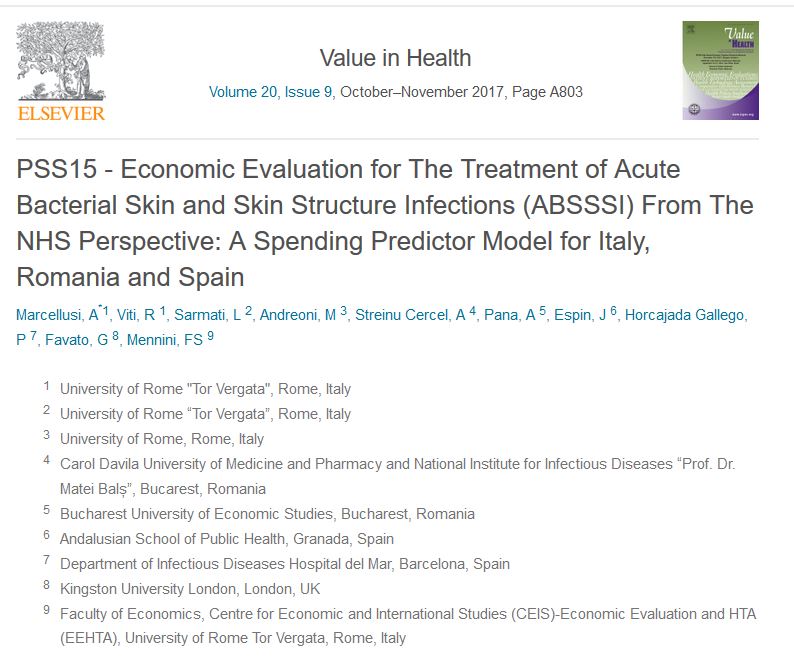
Objectives
Dalbavancin is a new innovative long-acting antimicrobial treatment of Acute Bacterial Skin and Skin Structure Infections (ABSSSI) that allows clinicians to endorse an early discharge (ED) approach. Aim of this study was to develop a spending predictor model for evaluating the direct costs associated with the management of ABSSSI from a National Payer perspective of Italy, Romania and Spain, in terms of hospitalization and drug costs for the treatment of ABSSSI comparing the standard of care (SOC) vs long-acting treatment dalbavancin.
Methods
A decision Tree model was developed to evaluate the clinical pathways of the ABSSSI patients in hospital. The SOC scenario was compared with a scenario using dalbavancin where patients have the possibility of being early discharged from hospital. The epidemiological and cost parameter were extrapolated from national administrative databases (hospital information system) and systematic literature review related to each country. Drug, hospitalization, specialist service, administration and adverse event costs were considered. Probabilistic Sensitivity Analysis and One-Way sensitivity Analysis were performed.
Results
The model estimated a total annual number of patients with ABSSSI of 48,000 in Italy, Romania and Spain. The introduction of dalbavancin could reduce the length of stay of an average of 4.1 days per patient (Base-case 11.5 vs 7.4 days). This effect could increase drug costs about +34.7%, and decrease other costs of -35.1%. Overall, dalbavancin reduced the economic burden of ABSSSI of 0.4% from the National Payer perspective with consistent results among Countries. The PSA e OWA demonstrated the robustness of the results.
Conclusions
Preliminary results highlight that the introduction of dalbavancin into ABSSSI clinical pathways could generate a significant reduction in term of length of stay with no incremental costs from the NHS perspective, moreover creating the opportunity for hospital’s efficiency increasing and reduced patients exposure to hospital acquired infections.


